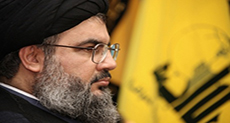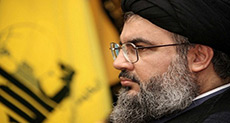July War... When Hizbullah downed the “Mirkava” myth

The July 12, 2006 War clearly demonstrated the fragility of "Israeli" military force against the will of a few hundreds of Hizbullah fighters, in a unique precedent in the history of the Arab-"Israeli" wars, the Lebanese resistance succeeded in striking the Zionist depth, in addition to the heavy military losses Tel Aviv incurred.
"Israeli" statistics revealed that the outcome of 32 days of war with Hizbullah came as follows: 119 "Israeli" soldiers, 39 'civilians' (occupation settlers) killed and 5000 wounded. The resistance's 3970 Katyusha rockets hit cities in occupied-Palestine's north and occupied-1948 depth in addition to economic losses of up to 25 billion shekels ($6.5 US Billion Dollars).
As military equipment level, the "Israeli" army in the war with Hizbullah lost a large number of state-of-the-art Mirkava tanks, among the most advance and most heavily shielded tanks in the world. Also lost were a number of giant bulldozers, four unmanned reconnaissance planes, three Apache helicopters and 1 warship (Sa'ar -5) - considered one of three most advanced warships in the "Israeli" Navy fleet.
A French report exposes "Israel"
Although the magnitude of past losses, there are those who expressed doubts in its validity and stressed that they are far from the truth of what happened on the ground, for on June 10, 2008, "axis of logic" centre in Massachusetts, exposed a secret French report of 300 pages contains previously unknown secrets of the Israeli-American war on Hizbullah and its real causes, it included the following: ‘The Mossad is the side which assassinated Hariri and the real and astounding losses incurred by "Israel" during the war: 2300 dead, 7000 wounded, 24 seamen were killed in the "Israeli" destroyer Sa'ar rather than 4 as claimed by "Israel", the number of "Israeli" tanks destroyed exceeded 160 tanks, including 65 Mirkava tanks, 65 soldiers were killed in a terrifying way through the destruction of their hideouts over their heads with anti-tank rockets.
On the other hand, Hizbullah's losses according to the report, which based its information on two sources the United Nations and the anti-Hizbullah Lebanese government, reached 50 fighters (according to UN sources) and 49 fighters (according to Lebanese government sources).
In the detailed facts of some of the events of the war, the report points out that in one hit Hizbullah killed 41 soldiers in Bint Jbeil on July 27, in a tight ambush plotted by Hizbullah guerrillas, additional to the destruction of 12 armored vehicles and 3 troop-carriers.
On August 9, Hizbullah combatants were able to kill 23 soldiers by destroying a house over their heads when they used it as a hide out, and in August 12, the resistance was able to kill 24 soldiers in a single clash, as well as five others in a helicopter downed by the resistance on the same day.
Concerning the munitions used by "Israel" during the war, the report reveals that "Israeli" fighter jets carried out 12,000 air strike missions, the "Israeli" Navy expended 2500 "Israeli" shells and missiles, while ground forces used up a hundred thousand shells.
Farewell Mirkava Myth
After a review of the French report, the most important remaining event is a case of bafflement and disbelief that haunted the "Israeli" army after its most advanced tanks collapsed one by one.
The Mirkava, the locally manufactured "Israeli" tank based on U.S. aid, one of the most advanced tanks in the world, was according to the minds of its inventers, considered one hundred percent formidable and immune against bombing.
But Hizbullah arrows overturned those beliefs revealing their falsity on the ground, as if the modest missiles Hizbullah fighters launched, knew their aim well, exposing the myth-tank and the single defect in its design.
Once this part of the tank was hit, the tank would explode instantly, hence the secret behind "Israel's" high bill of military casualties.
The domestically manufactured Mirkava tank, was the pride of the "Israeli" military for being able, among the different tank models in the world, to provide its crew with most safety, sometimes the "Israeli" military extolled its "Armature and Invincibility" as being the toughest before anti-tank projectiles, and the most able of tanks to maneuver in difficult environmental conditions.
All this came to a halt in its battle against Hizbullah, the latest version of the Mirkava- "Mirakava-4", proved a delicious meal for the resistance, which prompted military patrols and international newspapers to speak of the success of Hizbullah resistance to "neutralize" the jewel of the "Israeli" military industry.
In the process of interpreting the fall of the Mirkava myth, the American "Stratfor magazine", a magazine concerned with military affairs, highlighted that the anti-tank missile used by Hizbullah combatants is an upgraded version of the Métis Soviet missile and the French Milan missile. It has shown an impact on the most advanced battle tank the "Israeli" army had in its possession, the "Merkava-4."
The story of the Mirkava industry goes back to the 1967 war, when France imposed a trade embargo on "Israel", forcing "Israel" to make a deal with Britain to co-produce the "Chieftain" tank, a deal Britain later pulled out of because of Arab pressure. "Israel" then recognized its need for locally manufactured tanks and in 1970 decided to go it alone by starting a local tank manufacturing industry.
Despite the U.S. military air passage to "Israel" in the October 1973 war, and its supply of fuel powered tanks to the battle field, "Israel" went on with its plans benefiting from its experience in previous wars to manufacture the Mirkava and adapt it to "Israeli" requirements of speed and high-firepower capacity, the safety of the tank crew being the main focus due to "Israel's" small population.
"Mirkava -1" saw light in 1979, armed with a 105 mm gun, it was designed to suit the rugged nature of northern "Israel" and the occupied Syrian Golan Heights, and participated in the invasion of Lebanon in 1982.
This tank was characterized by a diesel engine in its front section; the fighting compartment position in the rear provides it with protection in battle, in addition to its tower design and special armoring equipment.
"Mirkava-2" followed it in 1983 equipped with a motor made suitable for urban battles after "Israel's" experience of war in Lebanon, the reason why it was armed with 60 mm anti-personnel machine-gun, with improvements made to the last model of this tank armor and fire control system.
Then came the "Mirkava-3" in 1990, armed with a 120-mm smooth lined gun, with improvements made on the last tank, this was called the "Mirkava - 3 Paz" (i.e. hawk).
Finally, in 2004 the "Mirkava - 4" tank entered the "Israeli" army service, mounted with the same 120-mm caliber gun of its previous model, and improved fire control system, shielding and defenses. Despite the secrecy shrouding the number of Mirkava tanks "Israel" produced, estimates indicate that "Israel" has produced at least 1500 Mirkava tanks.
Exploding a Mirkava has particular significance, far beyond being an "Israeli" loss in numbers, expensive equipage and prestige, it goes to being a blow to the might of the Zionist war machine, where "Israel" was promoting the Mirkava - 3 tanks to the world as the most heavily protected tanks in the world, its crew injury rate being up to 0% compared to the average of up to 26 injuries with the rest of the world's tanks.
On the economic front, the destruction of the Merkava-4 made Turkey cancel a deal of importing the tank from "Israel" worth millions of dollars, as is the case when the Palestinian resistance destroyed the "Merkava-3" tank, which back then, inflicted a painful blow to "Israeli" efforts to market the "Mirkava-3" tanks in all parts of the world. The price of the tank suddenly drastically dropped in world arms markets, and with it "Israel's" marketing projects crashed in China, India, Africa and some small European countries.
In the face of these unexpected losses, "Israel" admitted that from among all the Arab-"Israeli" wars, the balance of losses in the July war for the first time titled heavier on Tel Aviv, the human losses were approximately 1 to 1, when in past Arab-"Israeli" conflicts the losses were no less than 1 "Israeli" to every 20 Arab soldiers. Moreover, the Arab side for the first time succeeded in taking the battle inside into enemy territory, when in all previous wars "Israel" succeeded in keeping the fighting away from its interior front, limited to the interior fronts of the Arab side.




